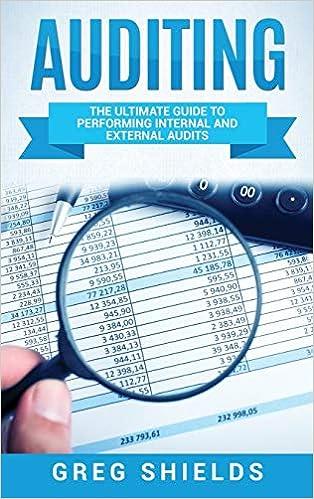Question
Introductory assignment to locate the key financial statements within a company's annual report/Form 10-K FSA Project to find a variety of items and calculate financial
Introductory assignment to locate the key financial statements within a company's annual report/Form 10-K
FSA Project to find a variety of items and calculate financial ratios using a company's annual report/Form 10-K All class members will use the same company, Mattel, Inc., which was used for the introductory assignment. Use Mattel's 2016 annual report/Form 10-K that is available here: http://www.annualreports.com/HostedData/AnnualReports/PDF/NASDAQ_MAT_2016.pdf
Here are the instructions for this project: UPLOADED AS IMAGES


Complete and submit this DOCUMENT BELOW, after converting it to a PDF document, to obtain full or partial credit for this project. On your answer sheet, use the page numbers of the actual report (not the PDF page numbers).
Here is the document we must put our answers on and submit.
Financial Statement Analysis Project
ANSWER SHEET
| Name(s): | |
| No. | Question | Page Number |
|---|---|---|
| Determine the average days to collect accounts receivable for Year 3. Do you feel this is reasonable considering your company's operations? Why or why not? | ||
| What is the allowance for uncollectible receivables for Year 2 and Year 3? What percent of the gross receivables portfolio is reserved for each of those years? Does this tell you anything about the companys concern for bad debts? | ||
| Calculate the inventory turnover for Year 3 and also the average days in inventory ratio. Is this reasonable considering your company's line of business? Explain. | ||
| What is the cost of property, plant, and equipment held by your company as of the end of Year 3? | ||
| What is the net book value of property, plant, and equipment as of the end of Year 3? | ||
| What method of depreciation (e.g., units of production, declining balance, straight line) is used for property, plant and equipment? | ||
| What is the amount of intangible assets owned by the company as of the end of Year 3? What kind are they (i.e., identify them)? | ||
| Calculate the current ratio for Year 2 and for Year 3. Explain the ratio and what the trend is telling you. | ||
| Compute the debt-to-assets ratio for Year 2 and Year 3. Explain whether debt is financing a larger or smaller proportion of the companys assets in Year 3 compared to Year 2. Is the company more or less risky from Year 2 to Year 3? Explain. | ||
| Prepare a schedule that reconciles retained earnings at the beginning of Year 3 with retained earnings at the end of Year 3. Use these three captions to reconcile Net Income/(Loss), Dividends, and Other. | ||
| What is the par value of the common stock? | ||
| How many shares of common stock are authorized at the end of Year 3? | ||
| How many shares of common stock are outstanding at the end of Year 3? | ||
| What is the total amount of cash dividends declared on common stock during Year 3? What is the total amount of cash dividends paid on common stock during Year 3? [Hint: They may not be the same amount.] | ||
| What percentage of net income did the company pay out in cash dividends? If the company did not pay cash dividends, why do you think it did not? | ||
| What is the amount of difference between net income and net cash provided (used) by operating activities for Year 3? What one or two items are most responsible for the difference? | ||
| How much cash did your company pay to purchase property, plant, and equipment during Year 3? | ||
| Did cash and cash equivalents increase or decrease from Year 2 to Year 3? By how much? |
Step by Step Solution
There are 3 Steps involved in it
Step: 1

Get Instant Access to Expert-Tailored Solutions
See step-by-step solutions with expert insights and AI powered tools for academic success
Step: 2

Step: 3

Ace Your Homework with AI
Get the answers you need in no time with our AI-driven, step-by-step assistance
Get Started


